A really useful next step would be to construct a parse tree:

You'd make one of these by writing an infix parser. You could either do this by writing a simple recursive descent parser, or by bringing in the big guns and using a parser generator. In either case, it helps to construct a formal grammar:
expression: additive
additive: multiplicative ([+-] multiplicative)*
multiplicative: primary ('*' primary)*
primary: variable
| number
| '(' expression ')'
Note that this grammar does not handle the 2x syntax, but it should be easy to add.
Notice the clever use of recursion in the grammar rules. primary only captures variables, numbers, and parenthesized expressions, and stops when it runs into an operator. multiplicative parses one or more primary expressions delimited by * signs, but stops when it runs into a + or - sign. additive parses one or more multiplicative expressions delimited by + and -, but stops when it runs into a ). Hence, the recursion scheme determines operator precedence.
It isn't too terribly difficult to implement a predictive parser by hand, as I've done below (see full example at ideone.com):
function parse()
{
global $tokens;
reset($tokens);
$ret = parseExpression();
if (current($tokens) !== FALSE)
die("Stray token at end of expression\n");
return $ret;
}
function popToken()
{
global $tokens;
$ret = current($tokens);
if ($ret !== FALSE)
next($tokens);
return $ret;
}
function parseExpression()
{
return parseAdditive();
}
function parseAdditive()
{
global $tokens;
$expr = parseMultiplicative();
for (;;) {
$next = current($tokens);
if ($next !== FALSE && $next->type == "operator" &&
($next->op == "+" || $next->op == "-"))
{
next($tokens);
$left = $expr;
$right = parseMultiplicative();
$expr = mkOperatorExpr($next->op, $left, $right);
} else {
return $expr;
}
}
}
function parseMultiplicative()
{
global $tokens;
$expr = parsePrimary();
for (;;) {
$next = current($tokens);
if ($next !== FALSE && $next->type == "operator" &&
$next->op == "*")
{
next($tokens);
$left = $expr;
$right = parsePrimary();
$expr = mkOperatorExpr($next->op, $left, $right);
} else {
return $expr;
}
}
}
function parsePrimary()
{
$tok = popToken();
if ($tok === FALSE)
die("Unexpected end of token list\n");
if ($tok->type == "variable")
return mkVariableExpr($tok->name);
if ($tok->type == "number")
return mkNumberExpr($tok->value);
if ($tok->type == "operator" && $tok->op == "(") {
$ret = parseExpression();
$tok = popToken();
if ($tok->type == "operator" && $tok->op == ")")
return $ret;
else
die("Missing end parenthesis\n");
}
die("Unexpected $tok->type token\n");
}
Okay, so now you have this lovely parse tree, and even a pretty picture to go with it. Now what? Your goal (for now) might be to simply combine terms to get a result of the form:
n1*a + n2*b + n3*c + n4*d + ...
I'll leave that part to you. Having a parse tree should make things much more straightforward.
